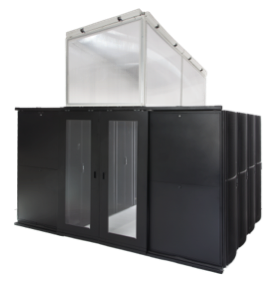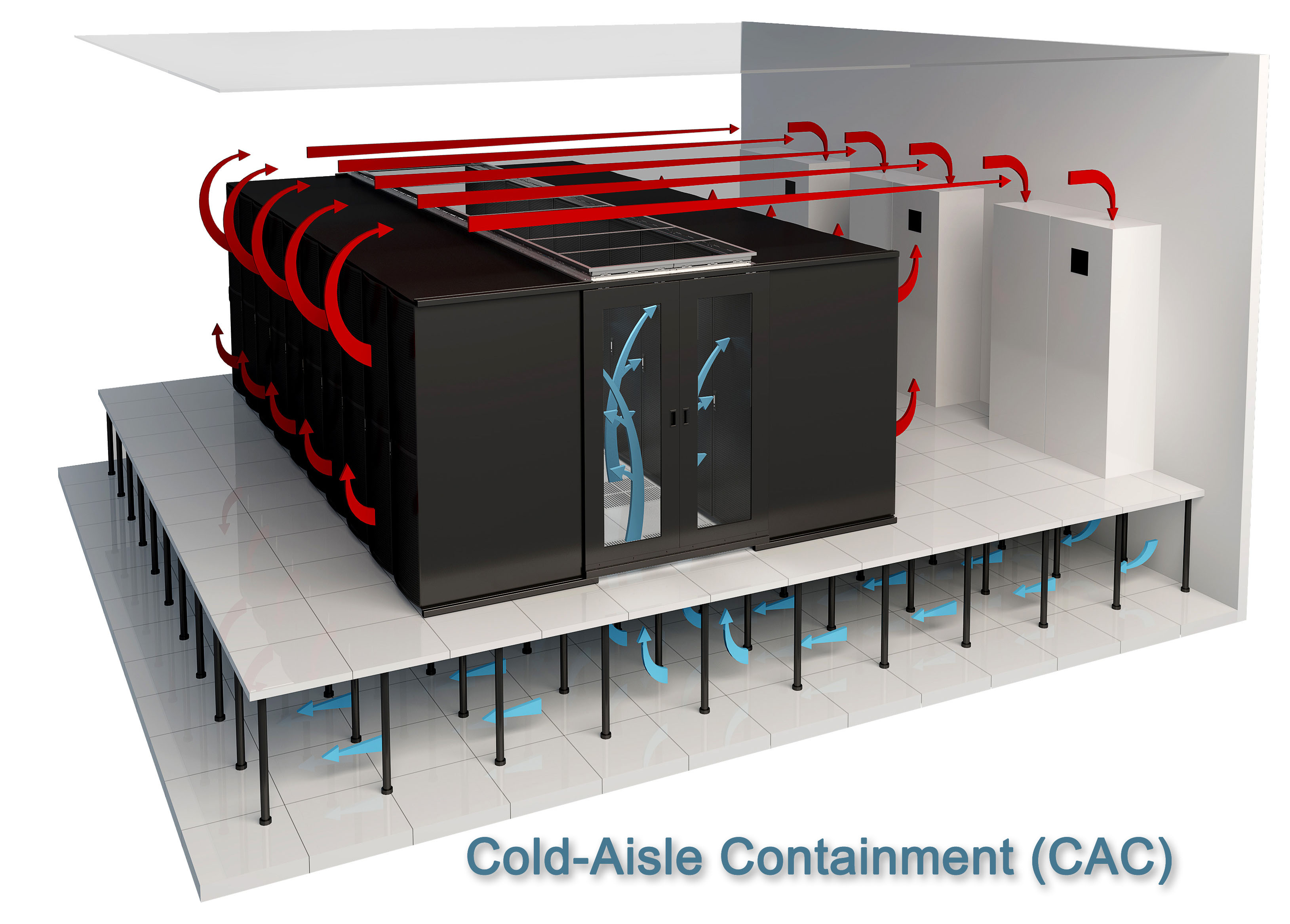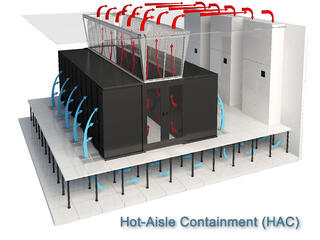To HAC or CAC? That is the Question
In today’s high-density virtualized data centers, keeping equipment cool is one of the topmost concerns among data center managers. And the problem is two-fold—not only does cooling represent about 30% of operational costs, but not having uninterrupted proper intake temperatures for equipment can result in overheating and failures that lead to even higher operating costs.

Consequently, many data centers oversupply cold air, placing undue financial strain on data center operations as CRAC units require more power to provide more cool air. And despite the oversupply of cold air, many data centers still experience hot spots.
Whenever hot exhaust air and cold supply air are not adequately separated, hot air can cycle back to the IT equipment intake—regardless of how much cold air is being pushed by CRAC units.
Furthermore, a lack of separation between hot and cold air causes increased cold air bypass—cool air that returns to the cooling unit unused.
The combination of high energy costs and high-density IT equipment pushing average heat loads into the 10 to 15kW per rack range is forcing many data centers to deploy containment strategies. An industry proven method of eliminating cold air bypass and the mixing of hot and cold air, containment of hot or cold aisles between rows of cabinets provides several efficiency benefits.
But what exactly is the difference between hot-aisle containment (HAC) and cold-aisle containment (CAC), and how do you know which is right for you? Let’s take a closer look.
A Barrier to Mixing
We all know that hot exhaust air from network equipment exits at the back of the cabinet, while cold supply air is drawn in by the equipment at the front. That’s the basis for traditional hot aisle/cold aisle configurations where data centers cabinets are placed in alternating rows back to back and front to front to keep hot air in one aisle and the cold in the other.
While the traditional hot aisle/cold aisle configuration that uses only cabinet placement worked well for lower-density environments and previous generation heat loads that averaged 2-4kW, it does not completely isolate the aisles and prevent the hot and cold air from mixing. The only way to really prevent the hot and cold air from mixing is to add a physical barrier. That’s where containment systems come in.
In HAC, a physical barrier traps and contains the hot exhaust air coming from the back of the cabinets in the hot aisle. This can be achieved with horizontal panels that form a flat roof across the hot aisle or vertical panels that extend the hot aisle to the ceiling. Horizontal panels are typically used in conjunction with in-row cooling systems to maintain the cool environment outside of the contained area. Vertical panels (also referred to as ducted) are used primarily with perimeter CRAC units to direct the hot return air to overhead return plenum.
CAC simply does the opposite. Horizontal panels form a flat roof across the cold aisle to trap cold air in raised-floor environments where the cooling comes up through the floor. Vertical panels extend the cold aisle up to the ceiling for use with overhead ducted cooling systems.


Mutually Beneficial
Regardless of which containment method is used, the ability to completely separate hot and cold air provides several efficiency benefits.
With containment, cooling systems can be set to a higher supply temperature while still providing a stable intake temperature for the equipment. This eliminates hot spots and the need to oversupply cold air or deploy expensive over-sized cooling equipment.
Containment eliminates cold bypass air and allows for warmer return air, providing improved heat exchange within the cooling system and greater operating efficiency. The result is improved equipment reliability, increased cooling capacity and reduced power consumption.
Additional efficiency benefits are gained by the fact that increased supply temperatures means a greater number of hours that the outdoor temperatures are lower than indoor—otherwise known as economizer hours. When this happens, cooling systems don’t have to work as hard and can save energy.
Depending on location, increased supply temperatures can also allow the cooling system to operate above the dew point temperature, maintaining a stable humidity level and reducing costs associated with humidifiers and dehumidifiers.
Which is Better?
If you’re wondering which is better—HAC or CAC—the answer as usual is that it depends.
Most industry professionals believe that HAC is better. With HAC, the general working area outside of the contained area remains cool. Not only does most routine data center work take place at the front of the cabinet, but IT personnel need to be able to be comfortably stationed at their desktops sometimes for large periods of time.
With CAC, the general working area is hotter. This can violate some OSHA working regulations; not to mention that a tour of a data center becomes very uncomfortable for outsiders. There may also be additional equipment outside of the contained area that can be adversely impacted.
But the biggest concern of containing the cold air and having the general working area be hot is that certain measures may be required to lower the temperature of the working environment. This reduces efficiency of the cooling system by preventing returning the hottest air possible to CRAC units, essentially defeating one of the main reasons for containment in the first place.
That being said, CAC is better than no containment at all. In some brownfield scenarios that feature a raised floor environment with limited ceiling height, overhead obstructions or no ceiling return plenum, CAC may be the best option.
The good news is that with Belden, you can have the containment solution that best optimizes availability, efficiency and hosting capacity for your specific data center environment.
The new Belden Aisle Containment System supports both HAC and CAC with lightweight, field-modifiable panels that are easily attached horizontally or vertically to any data center cabinets using a universal rail system. And with a complete data center efficiency offering and superior expertise, our engineers can recommend the best solution based on your computing load, cabinet layout and computing space requirements.
![System.String[]](https://assets.belden.com/transform/5a5cfdb0-3d15-410d-9424-43633897f39e/mike-peterson?io=transform:fill,width:300,height:300)